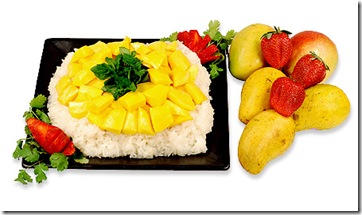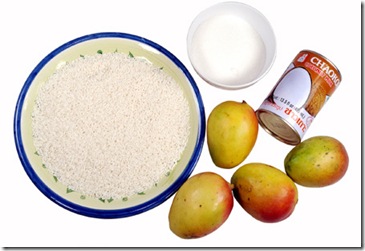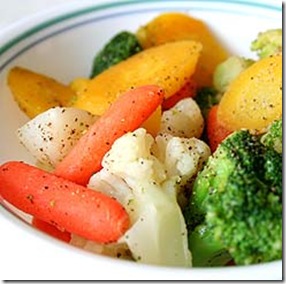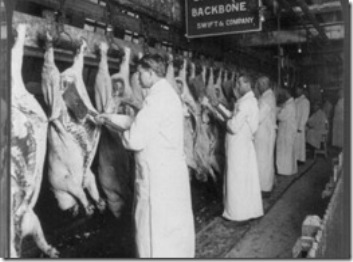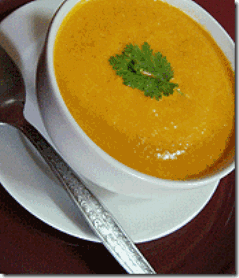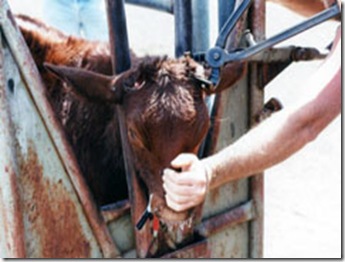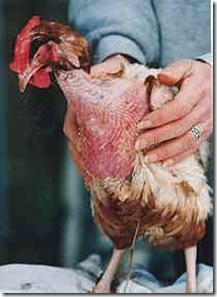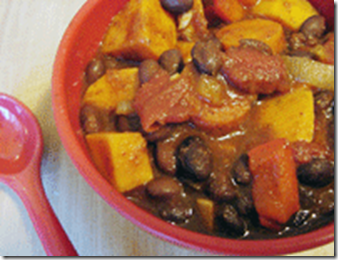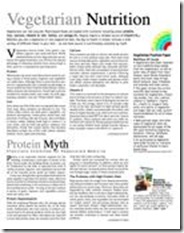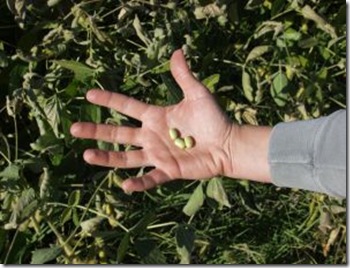
There is probably no more controversial area related to the health effects of soy than the relationship between soy intake and breast cancer risk. Concern over the possibility that soy consumption could actually stimulate breast tumor growth has led to much confusion among oncologists and other health professionals, and to frustration and even trepidation, among breast cancer patients. This is particularly ironic, because unarguably, it was excitement over the hypothesized anticancer effects of soy, an area first funded by the National Cancer Institute in 1991, which initially drew attention to the health effects of soyfoods (1).
This article attempts to briefly highlight those studies most pertinent to this controversy so that dietitians are better able to advise their clients about this issue.
Background
The low breast cancer mortality rates in soyfood-consuming countries, particularly Japan, combined with the knowledge that weak estrogens, such as the soybean isoflavones, can exert antiestrogenic effects in some situations, logically led to speculation that soy might reduce breast cancer risk. Isoflavones, which are found in nutritionally relevant amounts only in soybeans, have a similar chemical structure to estrogen but have traditionally beenconsidered to be weak estrogens. Early support for the protective effects of soy against breast cancer came in the form of an animal study published in 1990, which reported that rats fed diets containing soy developed approximately 50% fewer chemically-induced mammary tumors than control rats (2). One year later, a case-control study conducted in Singapore reported that soy intake was associated with an approximate 50% reduction in premenopausal breast cancer risk (3).
The Case against Soy
There is a clear consensus that greater lifelong exposure to estrogen increases breast cancer risk. The estrogen-like properties of soybean isoflavones therefore provide a basis for concern about soy consumption by breast cancer patients. In fact, although often overlooked, early on it was established that at low concentrations, genistein, the main isoflavone in soybeans, actually stimulates the growth of estrogen-receptor positive (ER+) breast cancer cells in vitro (4). The growth of ER+ breast cancer cells is stimulated by estrogen. Breast cancer patients can have a mix of estrogen receptor negative (ER-) and ER+ cells, but typically, one type of cell predominates and this determines treatment (5). ER+ breast cancer patients respond well to tamoxifen, an antiestrogen, which is the most widely prescribed breast cancer drug (6). Survival rates of ER+ breast cancer patients generally exceed those of ER- patients (7,8). Genistein does not stimulate the growth of ER-cells, and at high concentrations, the growth of both ER+ and ER- cells is inhibited by genistein (9). The proposed explanation for this biphasic effect is that at low concentrations the estrogenlike properties of genistein stimulate growth, whereas at higher concentrations, the ability of genistein to influence molecules that control cell growth, differentiation, and survival, results in growth inhibition. However, it is the lower concentrations that more closely reflect the serum genistein concentrations in people who eat soyfoods. The one animal study that markedly raised awareness of the potential detrimental effects of soy was published in 1998 by Helferich and colleagues, and found that in ovariectomized immune-compromised rats implanted with ER+ breast cancer cells, mammary tumor growth is stimulated when animals are fed diets to which genistein has been added (10). Although a pharmacological dose of genistein (750 ppm) was used in this study, serum genistein levels in these mice were comparable to those found in people eating soyfoods. However, for several reasons, the applicability of this particular experimental model to humans has been questioned. One element of the study design that brought criticism from nutrition scientists was that isolated genistein, rather than soy, or even a combination of isoflavones as found in soy, was added to the diet. However, this criticism has been directly addressed in a follow-up study. In recently published research, Helferich and colleagues found that soy protein isolate containing varying amounts of genistein stimulated tumor growth to the same extent as comparable amounts of isolated genistein (11).
Two human studies, one published in 1996, and the other in 1998, made it difficult to ignore concerns about soy, because both studies suggested soy exerts weak estrogenic effects on breast tissue. In the first study by Petrakis et al., breast nipple aspirate fluid secretion increased over a 5 month period during which time women had consumed 38 g of soy protein isolate per day (12). Furthermore, soy intake was associated with a higher percentage of hyperplastic cells in these women. Both results suggested a possible increased breast cancer risk based on previous epidemiologic observations. In the second study, after two weeks of consuming 60 g textured vegetable protein per day, McMicheal-Phillips found that breast cell proliferation (based on biopsies) increased markedly in premenopausal women (13). However, this initial report was a preliminary analysis and involved only 48 subjects. In the final analysis by Hargreaves et al., involving all 84 subjects, no effects on cell proliferation were noted nor were there changes in several other markers of estrogenicity (14). But levels of pS2, a protein upregulated by estrogen, did significantly increase. Consequently, the investigators concluded that soy exerted weak estrogenic effects on breast tissue but that the long-term implications of this effect were unclear.
The Case For Soy
Epidemiologic studies conducted in Asia generally do not show that the adult consumption of soy reduces postmenopausal breast cancer risk but the low rate of breast cancer mortality in Japan and the superior prognosis of Japanese breast cancer patients in comparison to patients of other ethnic groups are observations often cited as support for soy intake being beneficial, or at the very least, not being harmful, for breast cancer patients. However, these kinds of data do not specifically address the effect of soy. Arguably, breast cancer rates might be even lower, and prognosis even better, if soy was not part of the Japanese diet. Furthermore, women in Japan consume soy throughout their lives, which may have a very different effect than first consuming soy only after having been diagnosed with breast cancer.
Animal studies generally show that the addition of soy protein or isoflavones to a typical laboratory diet reduces chemically-induced mammary tumorigenesis, although the effects are somewhat inconsistent and often not particularly robust (15,16). No studies show increased mammary tumorigenesis when soy is fed to adult animals. However, with few exceptions, the animal studies address tumor development, not effects on existing tumors. Thus, their relevance to breast cancer patients is unclear. An important exception is a study by Shao et al. They found that when intact (with a uterus) immunecompromised mice were implanted with ER+ breast cancer cells, genistein injections actually decreased mammary tumor development (17). These findings are in contrast to those by Helferich and colleagues cited previously (10,11). Shao et al. did inject genistein, which raises questionsabout extrapolating the results to humans, but recent data by Zhou et al. show that in intact mice, dietary genistein also inhibits mammary tumor growth (18).
The primary difference between the two studies in which genistein was protective, and the studies by Helferich and colleagues in which genistein and soy protein isolate were tumorigenic (10,11), is that in the latter studies, mice were ovariectomized. This suggests that in a low-estrogen (ovariectomized mice) environment such as may exist in postmenopausal women, genistein has proliferative and possibly estrogenic effects, whereas in a high-estrogen environment, such as may exist in premenopausal women, it is antiproliferative and possibly antiestrogenic. Overall however, the antiestrogenic effects of soy have not been easy to demonstrate. Furthermore, Shao et al. found that genistein inhibited the growth of ER- cells in vivo, which suggests that the antiproliferative effects of genistein may not be due to antiestrogenic effects even in the case of ER+ cells (17). In any event, it is unlikely that the results of animal studies can resolve the complex issue of soy consumption by breast cancer survivors.
Recently, two studies looked at the effects of isoflavone supplements on breast tissue density. Breast tissue density is an excellent marker of breast cancer risk. Density is increased in response to stimuli that increase risk, such as hormone replacement therapy HRT), and is decreased in response to compounds that decrease breast cancer risk, such as tamoxifen and raloxifene (19). In one yearlong study, isoflavone (100 mg/day) supplements had no effect on breast tissue density in premenopausal women (20), and in the other yearlong study, isoflavone 40 mg/day) supplements actually decreased breast tissue density in women 56-65 years of age (21). Thus, these studies suggest soy does not increase, and may decrease, breast cancer risk. Of course, both studies were conducted in healthy women, not breast cancer patients.
Lessons from HRT
The relationship between HRT and breast cancer risk is unclear. Fortunately, the results from several recently conducted prospective studies have done much to clarify this relationship. These studies indicate that the combination hormones (some form of estrogen in combination with a progestin) markedly increase risk, as much as 2-3fold over the course of a women’s lifetime, whereas estrogen by itself, raises risk only slightly (22). This suggests that soy, which at most only possesses estrogen-like activity (23), and may even lower serum progesterone levels (24), is not likely to increase breast cancer risk in healthy women. But again, the question arises as to whether this conclusion is relevant to breast cancer patients. However, the HRT data may provide some answers to this question as well. Although many oncologists recommend against their patients using HRT, this position is not without controversy and recent studies have been unable to demonstrate that HRT decreases survival in breast cancer patients (25). Thus, since there are no convincing data that HRT has a detrimental effect on the survival of breast cancer patients, it seems highly unlikely that soy would.
Conclusion
Only intervention studies in which the effect of soy consumption on the survival of Western breast cancer patients is examined can definitely determine whether soyfoods are contraindicated for such women. Because this type of research is difficult and expensive to conduct, and may not be approved for ethical reasons, it is unlikely that such trials will be forthcoming. Furthermore, even if this research was undertaken, the results would not be known for many years. Alternatively, some insight may be gained by studying the effects of soy on markers of breast cancer risk in both healthy women and breast cancer survivors. Unfortunately, Asian epidemiologic studies focused on diet and the survival of breast cancer patients may not help to resolve this issue because these studies would involve subjects who have consumed soy throughout their life, not beginning as an adult after having been diagnosed with breast cancer. Until further data are available, in the opinion of this author, the evidence does not justify recommending that breast cancer patients who enjoy partaking of soyfoods stop doing so, nor do they justify recommending that breast cancer patients specifically begin soy consumption solely for the purpose of preventing recurrence and enhancing survival. Therefore soy intake recommendations for breast cancer patients are similar to those for healthy women. Overall the evidence suggests that the intake of approximately 15 g (range, 10 to 25 g) of soy protein and 50 mg (range, 30 to 100 mg) of isoflavones per day is safe and has the potential to exert health benefits. This amount of soy protein and isoflavones is provided by approximately two servings of traditional soy foods.
Is it a matter of dose and form of soy?
Often statements about breast cancer patients and soy emphasize that only large amounts of soy or pills are likely to be harmful. However, the evidence does not appear to be consistent with this perspective. In the study by Petrakis et al. cited previously in the case against soy, subjects consumed 38 g of soy protein isolate per day, which provided about 80 mg of isoflavones. This is certainly a significant amount of soy protein, far more than the approximately 8-10 g Japanese women typically consume (26). However, the more relevant issue is the 80 mg of isoflavones. This amount is found in only about 2-3 servings of soy, and is only a little more than twice the average daily intake in Japan. Thus, this would not be considered excessive isoflavone exposure. Furthermore, in the other human study that raised concerns by Hargreaves et al., subjects consumed 60 g of textured vegetable protein that contained only 45 mg (the amount found in about 5 ounces of tofu) of isoflavones per day, a rather modest amount (14). Also, as already mentioned, in vitro, higher genistein concentrations inhibit the growth of ER+ breast cells, whereas lower concentrations are stimulatory. Therefore, if soy is problematic, the problem is not specifically a result of excessive consumption. In regard to pills versus soyfoods, as noted above, the two human studies raising most concern used soy protein, not isolated isoflavones. Furthermore, in ovariectomized mice, soy protein was shown to stimulate tumor growth to a similar extent as isolated genistein (11). Conversely, isolated genistein (not soy protein or foods) inhibited tumor growth in intact mice (17,18), and isoflavone supplements (not soy protein or foods) had a favorable effect on breast tissue density in postmenopausal women (21). Although the use of pills can be debated on several grounds, the evidence suggests that in regard to breast cancer risk, equivalent amounts of isoflavones from pills and foods will produce similar effects.
Soy and Tamoxifen?
There is ample reason to speculate that soy might be contraindicated for women on tamoxifen. However, Gotoh et al. found that tamoxifen and a diet containing 10% miso synergistically inhibited the development of chemically induced mammary tumors in rats (15). Miso is a fermented soybean paste. Furthermore, in a follow up experiment, when treatment was delayed until tumors had been allowed to grow for several weeks, the combination treatment inhibited growth by approximately 50% whereas tamoxifen alone was ineffective (15). Recently, Constantinou found that a diet containing approximately 16% soy protein and tamoxifen additively inhibited the development of chemically induced mammary tumors (27). Clinical decisions shouldn’t be based on animal data, but these two studies suggest research examining the effect of soy on the efficacy of tamoxifen should be rigorously pursued. Isoflavones:
More than Phytoestrogens
Isoflavones are often referred to as phytoestrogens because they bind to estrogen receptors. It is clear however that not all ligands that bind to estrogen receptors have similar physiological effects. Receptor binding is only one small part of the story. The shape of the ligand-receptor complex and how this complex interacts with activation factors in the cell, and DNA, determines the overall effect on cells (28,29). Thus, it may be more appropriate to refer to the estrogen-like, rather than estrogenic effects, of isoflavones. Furthermore, two very important observations are that isoflavones bind with much greater affinity to estrogen receptor beta (ER-ß) than estrogen receptor alpha (ER-a), and stimulate transcriptional activity with much greater potency when bound to ER-ß than ER-a (29,30).
Until recently, the scientific community understood there to be only one type of estrogen receptor. But in 1996, Swedish researchers identified a second estrogen receptor, which they named ER-ß, to distinguish it from the original estrogen receptor, ER-a (31). These receptors have different tissue distributions, so for example, ER-ß predominates in injured coronary vessels whereas ER-a predominates in the uterus. This suggests that isoflavones are natural selective estrogen receptor modulators (SERMs). In contrast to estrogen, which exerts estrogenic effects on all tissues and as a result dramatically raises endometrial cancer risk, SERMs, such as the drugs tamoxifen and raloxifene, have estrogenic effects in some tissues, but either no effects or antiestrogenic effects in other tissues.
The ideal SERM would have antiestrogenic effects on the breast, estrogenic effects on the bone, and either no effects or antiestrogenic effects on the uterus. Isoflavones have estrogenic effects on coronary vessels (32) but not on the endometrium (33).Therefore, isoflavones do qualify as SERMs. But their effect on breast tissue is still unclear.
Bear in mind though that as noted previously, isoflavones also possess nonhormonal properties; for example, they exert antioxidant effects under some experimental conditions and influence the activity of enzymes involved in the metabolism of estrogen, and that regulate cell growth and differentiation (34,35). Thus, isoflavones are more than phytoestrogens and may exert biological effects that have little to do with binding to the estrogen receptor. Consequently, even referring to isoflavones as SERMs doesn’t fully describe their potential biological actions.
Used with permission from the Vegetarian Nutrition DPG.

